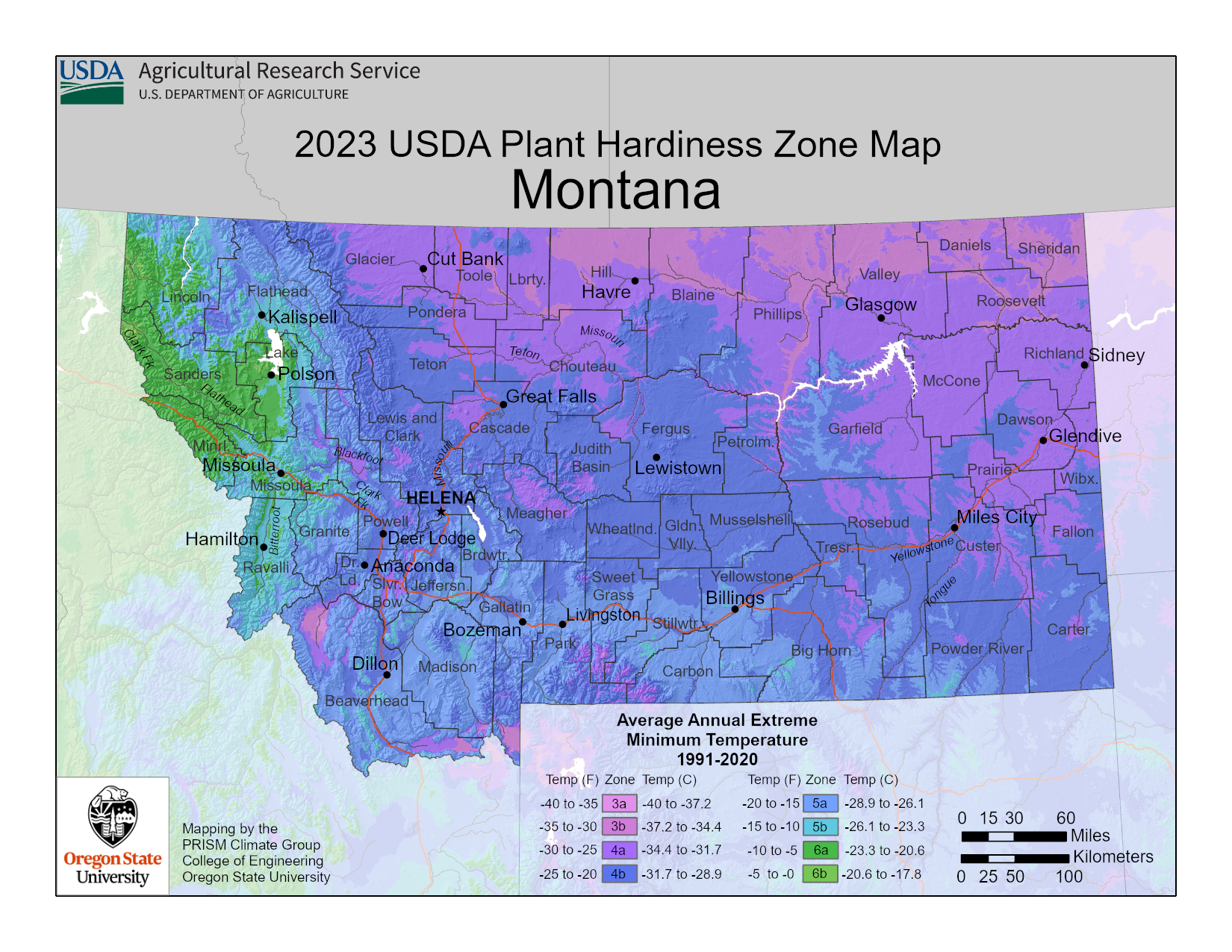
USDA Plant Hardiness Zones Updated
The USDA just released their updated map, go check it out here.
Understanding USDA Winter Hardiness Zones:
The USDA Winter Hardiness Zones map is a valuable tool for gardeners, providing a comprehensive overview of the average annual extreme minimum temperatures across different regions of the United States. Ranging from Zone 1a (coldest) to Zone 13b (warmest), each zone represents a 10-degree Fahrenheit temperature difference.
These zones play a crucial role in helping gardeners select plants that are well-suited to their specific climate. By aligning our plant choices with the corresponding hardiness zone, we increase the likelihood of success in nurturing healthy and robust gardens.
How the Zones Work:
The USDA Winter Hardiness Zones are determined based on historical weather data, specifically the lowest temperatures recorded in an area over a specific period. The zones are updated approximately every ten years, ensuring that the map remains accurate and reflective of changes in climate patterns. (HOWEVER, you must not forget that this is and AVERAGE, it is not a guarantee that we will not dip back down to our ‘old zoning’ of a 3.) For example in January 4th of 2024, we reached -27 in some areas around the lake, without a wind chill factor, there was a lot of damage to cherry buds, and new young trees and limbs.
Gardeners can find their specific hardiness zone using online resources or the USDA’s interactive map. Once identified, this zone becomes a vital reference point for selecting plants that can withstand the winter conditions in a given location.
Choosing Plants Wisely:
Armed with knowledge about your local hardiness zone, you can make informed decisions about the plants that are most likely to thrive in your garden. Look for plants labeled with your zone or lower, ensuring they are well-suited to withstand the lowest winter temperatures in your area.
For example, if you reside in Zone 5B or 6A (if your around the Flathead Lake area), gardeners can enjoy a variety of plants that are well-suited to withstand the colder temperatures. Here are some suggested plants for USDA Zone 5b:
Lilac
Hydrangea
Burning Bush
Red Maple
Sugar Maple
Crabapple
Serviceberry
White Pine
Marigold
Petunia
Snapdragons
Tomatoes (choose varieties with shorter growing seasons)
Peppers (especially varieties with shorter maturation times)
Carrots
Kale
Lettuce
Broccoli
Chives
Parsley
Thyme
Rosemary (consider bringing indoors or providing winter protection)
Tulips
Daffodils
Crocuses
Alliums
Hyacinths
The list can truly go on and on… lease we forget our fruit trees.
Adapting to Change:
Climate change continues to impact gardening conditions, leading to shifts in hardiness zones over time. Gardeners should stay updated on any changes in their local zone and be open to experimenting with new plant varieties that may now thrive in their region.
Understanding USDA Winter Hardiness Zones is an empowering step toward creating a resilient and flourishing garden. By aligning our plant selections with the specific climate conditions of our region, we not only enhance the beauty of our outdoor spaces but also contribute to the overall health and sustainability of our environment. So, the next time you embark on a gardening adventure, let the USDA Winter Hardiness Zones be your guide to a successful and thriving landscape.
When selecting plants, it’s essential to consider factors beyond cold hardiness, such as soil type, sunlight requirements, and moisture levels. Additionally, local nurseries and garden centers often carry plants that are well-suited to the specific microclimates within Zone 5b. Always check plant labels or consult with local gardening experts to ensure the success of your garden in this climate.